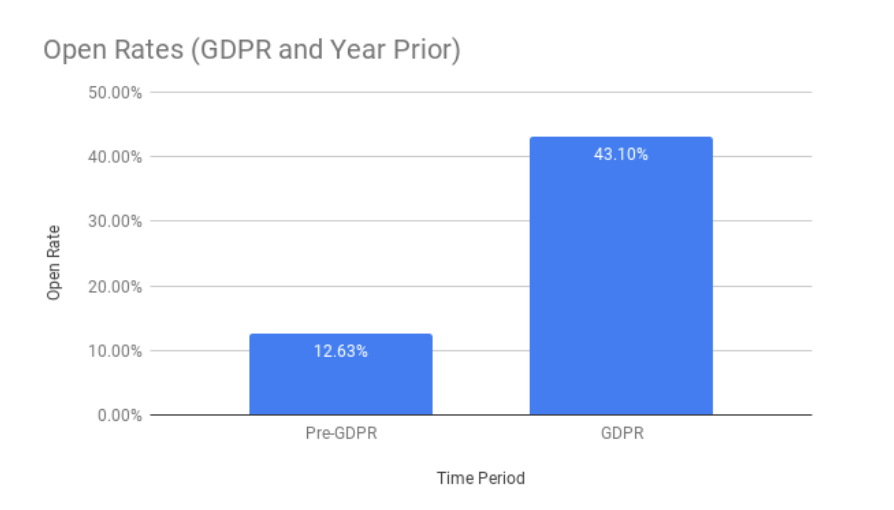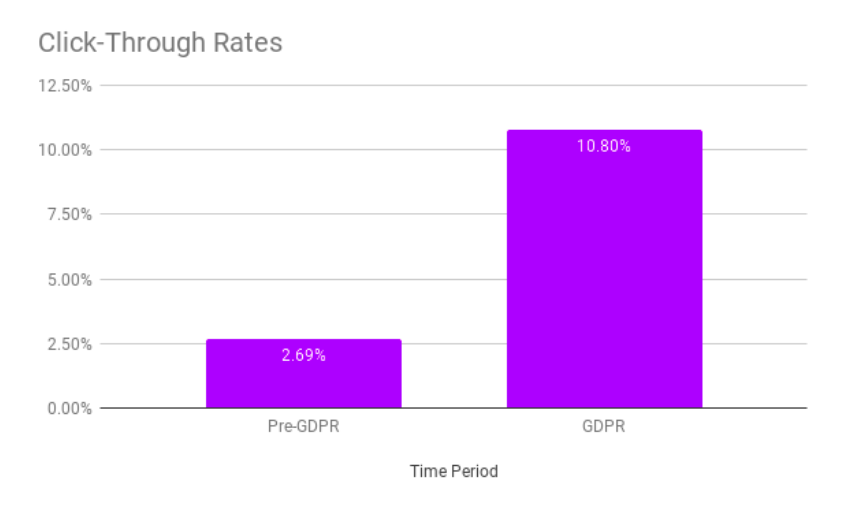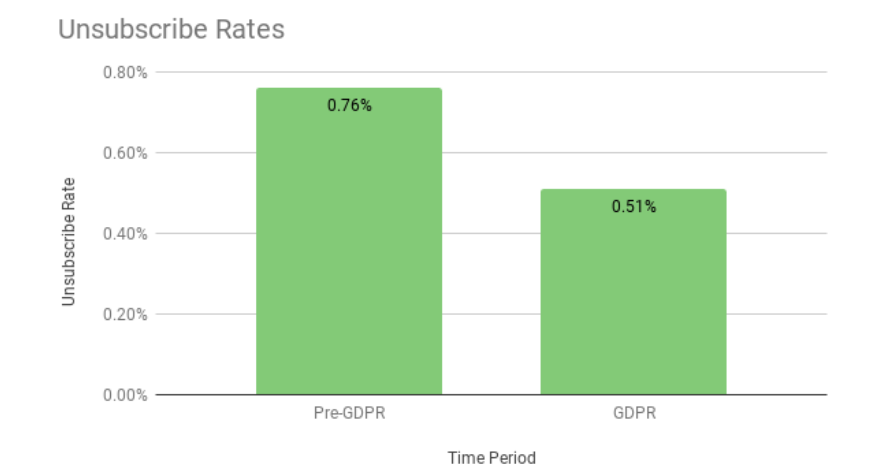Way back in the second quarter of 2018, all the marketing buzz (and concern) seemed to involve GDPR.
It was barely a year ago that companies that did any business within the European Union were fretting over how to interpret compliance with the EU’s General Data Protection Regulation. What would the broad, open-to-interpretation law mean for businesses that collected customer data of any kind?
Formstack was no different, and our most public efforts came by way of giving users transparent options to access their data, request its deletion, or opt-out of data gathering and communication entirely.
On the marketing side, there was understandable worry about what GDPR compliance and expressed consent for marketing communication would mean for our ambition to grow our user base and email lists, like our blog newsletter.
Now that we’re a full year into GDPR living, we looked back at what our approach to meeting and ultimately embracing compliance meant to our lead generation and email marketing efforts. In short, GDPR raised the bar for the standard of consent for data collected from EU citizens.
Formstack zeroed in on the issue of consent. Under GDPR, organizations collecting individuals’ data cannot rely on any sort of implied consent. Specifically, “Silence, pre-ticked boxes or inactivity should not constitute consent,” (GDPR Recital 32).
For us, that meant not automatically opting in people to email campaigns after they signed up for a webinar or accessed a piece of gated content. Instead, we added an unchecked box at the end of those content forms.
If a user only wants to attend the webinar and not hear from Formstack further, that choice is clear.

When we switched away from automatically opting-in people for email sequences following webinar registrations or content downloads, we had two basic hypotheses:
- The rate of manual opt-in to these related nurture campaigns would be comparatively low, less than 50%.
- Those who did opt in would be eager to receive additional, relevant information from Formstack, and many of our email campaign engagement metrics would increase as a result.
What did we find?
During the year leading up to the beginning of GDPR (May 25, 2017-May 24, 2018), we launched six new email nurture campaigns with 17 distinct email templates.
During the first year of GDPR (May 25, 2018-May 24, 2019), we launched 14 new nurture campaigns featuring 46 email templates. The big reason for the increase in email volume came out of a greater emphasis on content marketing at Formstack and the addition of two additional copywriters to our staff.
With our automatic opt-in process in the year prior to GDPR’s debut, our content nurture campaigns delivered 3,277 emails. In comparison, with user-controlled opt-in under GDPR, we delivered 1,768 emails.
Our opt-in rate for our 14 campaigns averaged 30%. Individual campaign rates were as high as 46% and as low as 11%. And even though Formstack delivered 46% fewer nurture emails in the first year under GDPR, the number of total opens rose by 84%.
Boom! Now we’re getting somewhere. By only sending to people who actively waved their hands asking for more information, we did ourselves a huge favor.
Overall, open rates on these nurture emails jumped by 341%!

Naturally, click-through rates soared as well (up 400%), largely because of the increase in opens.

Because the people we sent emails to explicitly requested additional emails, our unsubscribe rates dropped 33%. In all, 87% of the emails we sent during GDPR’s inaugural year had zero opt-outs. That was more than double the rate from the year prior.

What’s it all mean?
Beyond just the nurture campaigns, Formstack’s GDPR opt-in lists are more than twice as likely as other people in our database who haven’t manually opted-in (through one of our content campaigns) to have opened any email from Formstack in the past two months.
Our refined approach can also help inform our sales projections and prioritization. Seven in 10 of our GDPR opt-in list members are non-customers.
Looking ahead, we will test different messaging alongside these GDPR opt-in checkboxes with an aim to increase opt-in rates. We will also use engagement data to inform decisions on future content creation.
In fairness, if the data showed that no one was opting in to these campaigns, and the change sank our content nurture efforts, it would be more difficult to laud GDPR’s impact on Formstack’s marketing. Thankfully, we’re able to clearly see that giving our audience transparent flexibility and control over what content they access is a win for our product and our brand.
Check out other intriguing articles on how to improve lead generation and marketing . by signing up for our monthly newsletter.












